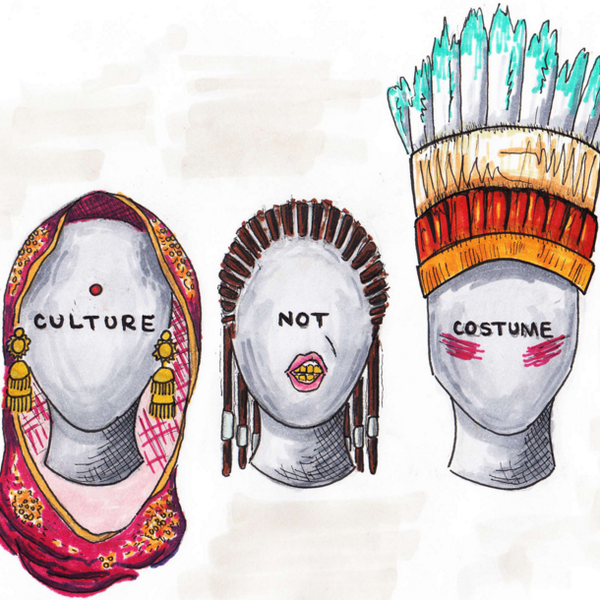Has American Yoga completely separated from Hindu Yoga? If so, is this separation cultural appropriation or simply a natural split? Vivekananda introduced yoga, the Hindu practice which connects the individual with Brahmin, to the United States 150 years ago, unaware that the capitalistic west would manipulate the tradition into one that appeals to consumers and retailers, instead of those seeking Brahmin. By definition, cultural appropriation is the adoption of something specific from one culture by another culture, without acknowledging its origins. America culturally misappropriated Hindu Yoga, as they manipulated it and gave no credit to its roots. The American public took what they liked from yoga, but abandoned all its religious significance, enabling it to be marketed as an exercise rather than a sacred tradition. Although Western yoga seems to be a harmless derivative of the Hindu tradition, in actuality, it is a classic example of harmful cultural misappropriation, as Westerners fail to acknowledge its Hindu roots and have changed it from a religious tradition into a multi-billion dollar industry.
When introducing yoga to the U.S. 150 year ago, Vivekananda intended for Americans to practice it as Hindus did; instead, Westerners took what they wanted from it, ignored the spiritual significance, and attributed none of it to Hinduism. Hindu Yoga is defined as the realization of god, the path connecting the individual to Brahmin. There are four subcategories of yoga, each a separate way of connecting with Brahmin: Jnana Yoga-knowledge, the steepest and fastest path to Brahmin, Bhakti Yoga-love and devotion to a chosen god, Karma Yoga-action based on knowledge, and Raja Yoga-control, practice, and meditation. I’ll posit that religious practices can be divided into two categories, behavior or ritual, and Hindu Yoga falls under religious ritual, for it is performed in order to break the cycle of Samsara and reach union with Brahmin.
In comparison to this, culturally misappropriated Western yoga does not carry any religious significance, but rather is marketed as solely an exercise. Not only has the west ignored the religious significance, but they have also worked to destroy it. For example, in 2010, the Hindu-American “take back yoga” movement commenced, as the term “Hindu” was missing from a premier yoga magazine. After multiple letters, the publication responded explaining that “Hinduism carries too much baggage,” suggesting that they intended to rid Western yoga of any faint connection to Hinduism by refusing to acknowledge its origins. In addition, the Western practice of yoga consists of only physical stretches and some breathing exercises. Yet, these are only two of the eight pieces associated with Hindu yoga. In its truest Hindu form, yoga consists of: Asana (physical), breathwork, meditation, concentration, observations, withdrawal, restraints, and high-level meditation. Moreover, according to Vivekananda, Asana, practiced by the West, is the least important part of yoga as “you are not your body,” meaning your Atman (essential self) is not connected with the body it manifests itself in, as it can be reborn into another body. Western yoga is a classic example cultural misappropriation because America has adapted the practice to fit into its society, stripping it of all religious significance, and giving Hinduism null credit.
In addition, the appropriation of yoga in the west has transformed the once sacred tradition into a billion dollar business aimed at a Western market. After Asana (the physical part of yoga) became popular in the U.S. as a form of exercise, retailers pounced, seeing a chance to make a profit from this practice. As the U.S. is one the most obese countries in the world, marketing exercise clothing and products is a profitable business. This proved true, yoga pants currently sell for as much as $108. In addition, American yoga and the retail tied to it form a $6 billion dollar industry. In spite, some still argue that yoga has to change to welcome more people. But, why should one culture be forced to change its practices to appeal to the Western world? Well, the west did it for the Hindus, diluting yoga a lot by stripping it of all religious significance, thereby making it appealing to everyone. Once the religious aspect was gone, it became marketable. The cultural misappropriation of yoga in the west allowed for it to be marketed as a form of exercise, rather than a spiritual practice, making yoga’s impact on America a profitable one.
It frustrates me that some choose to brush off Hindu yoga and Western yoga as completely separate, when in actuality, Western yoga is a derivative of the Hindu tradition, appropriated to appeal to American retail. In its truest form, yoga is defined as the realization of god, a practice bringing Hindus closer to Brahmin. In comparison to this, Western yoga has evolved to be a form of stretching and exercise. This transformation from religious practice to exercise was not accidental, Americans picked what they liked, claimed it as their own, ignored the other aspects of the tradition, and eventually made it into a profitable industry.





















